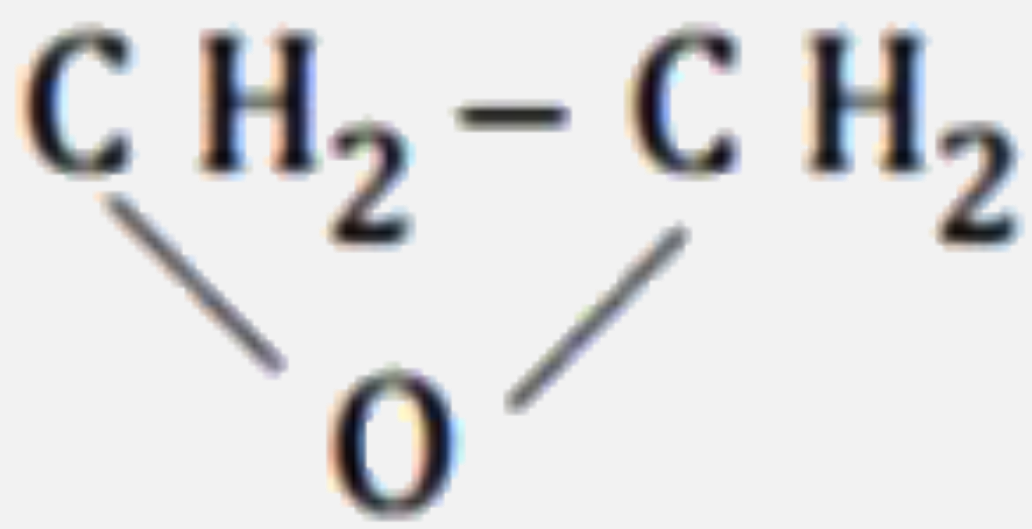Acid catalyzed hydration of alkenes except ethene leads to the formation of
secondary or tertiary alcohol
primary alcohol
mixture of secondary and tertiary alcohols
mixture of primary and secondary alcohols
The correct Answer is:A
To solve the question regarding the acid-catalyzed hydration of alkenes (excluding ethene), we will follow these steps:
1. Understanding Acid-Catalyzed Hydration:
- Acid-catalyzed hydration involves the addition of water (H2O) to an alkene in the presence of an acid (commonly sulfuric acid, H2SO4). This process leads to the formation of alcohols.
2. Formation of Hydronium Ion:
- The acid dissociates to produce hydronium ions (H3O+). This ion acts as an electrophile that will attack the alkene.
3. Electrophilic Attack:
- The double bond in the alkene acts as a nucleophile and attacks the hydronium ion. This results in the formation of a carbocation intermediate.
- For example, in the case of propene (CH3-CH=CH2), the double bond attacks the H+ from H3O+, leading to the formation of a secondary carbocation (CH3-CH+-CH3).
4. Nucleophilic Attack by Water:
- Water (H2O) then acts as a nucleophile and attacks the positively charged carbon of the carbocation. This step leads to the formation of a protonated alcohol.
5. Deprotonation:
- The protonated alcohol loses a proton (H+) to yield the final alcohol product.
- In the case of propene, this results in the formation of isopropanol (2-propanol), which is a secondary alcohol.
6. Generalization for Other Alkenes:
- For alkenes other than ethene, such as isobutylene (2-methylpropene), the same mechanism applies, leading to the formation of tertiary alcohols.
- The result is that acid-catalyzed hydration of alkenes (except ethene) typically yields secondary or tertiary alcohols.
Conclusion:
- The acid-catalyzed hydration of alkenes (except ethene) leads to the formation of secondary or tertiary alcohols.
- Acid-catalyzed hydration involves the addition of water (H2O) to an alkene in the presence of an acid (commonly sulfuric acid, H2SO4). This process leads to the formation of alcohols.
- The acid dissociates to produce hydronium ions (H3O+). This ion acts as an electrophile that will attack the alkene.
- The double bond in the alkene acts as a nucleophile and attacks the hydronium ion. This results in the formation of a carbocation intermediate.
- For example, in the case of propene (CH3-CH=CH2), the double bond attacks the H+ from H3O+, leading to the formation of a secondary carbocation (CH3-CH+-CH3).
- Water (H2O) then acts as a nucleophile and attacks the positively charged carbon of the carbocation. This step leads to the formation of a protonated alcohol.
- The protonated alcohol loses a proton (H+) to yield the final alcohol product.
- In the case of propene, this results in the formation of isopropanol (2-propanol), which is a secondary alcohol.
- For alkenes other than ethene, such as isobutylene (2-methylpropene), the same mechanism applies, leading to the formation of tertiary alcohols.
- The result is that acid-catalyzed hydration of alkenes (except ethene) typically yields secondary or tertiary alcohols.
- The acid-catalyzed hydration of alkenes (except ethene) leads to the formation of secondary or tertiary alcohols.
Topper's Solved these Questions
- ALKENE, ALKANE & ALKYNE BOOK - ALLENCHAPTER - ALKENE, ALKANE & ALKYNE EXERCISE - EXERCISE-5(B)
66 Videos
- ALKENE, ALKANE & ALKYNE BOOK - ALLENCHAPTER - ALKENE, ALKANE & ALKYNE EXERCISE - EXERCISE-4[A]
50 Videos
- ALKENE, ALKANE & ALKYNE BOOK - ALLENCHAPTER - ALKENE, ALKANE & ALKYNE EXERCISE - EXERCISE-4(B)
10 Videos
- AIIMS 2019BOOK - ALLENCHAPTER - AIIMS 2019EXERCISE - CHEMISTRY
40 Videos
- ALKYL AND ARYL HALIDEBOOK - ALLENCHAPTER - ALKYL AND ARYL HALIDEEXERCISE - EXERCISE-05 (B)
35 Videos
Similar Questions
Knowledge Check
The reaction of
 with RMgX, leads to the formation of : ARCHOHRBRCHOHCH3CR2CHCH2OHDRCH2CH2OH
with RMgX, leads to the formation of : ARCHOHRBRCHOHCH3CR2CHCH2OHDRCH2CH2OH
Straming of protoplasm in Amoeba leads to the formation of
View SolutionReaction of with RMgX leads to formation of

View SolutionReaction of
 with RMgX lead to formation of
with RMgX lead to formation of
View SolutionOverlapping of 2 hybrid orbitals can lead to the formation of :
View SolutionIn the acid catalyzed dehydration of alcohols to alkenes, the intermediate species formed is
View SolutionIn which of the following reactions, reaction of silver with the given acids lead to the formation of compound of silver, along with liberation of gas?
View SolutionDirect elongation of the radicle leads to the formation of_____root.
View Solution
